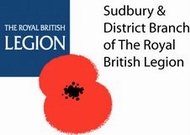|
1756 56th Battalion, Australian Infantry, Australian Imperial Force
Ernest Baring, one of seven children of Rev. Francis Henry and Amy Baring was born at Northam, Devon in 1889, where his father was Rector. Prior to his parents moving to India around 1897, his father was recorded in 1896 as ‘a Rector in Suffolk’, but by 1901 his widowed Mother was back in England living at Verne House Newton Road, Sudbury.
Ernest attended Haileybury College in Hertfordshire. He had emigrated to Australia by 1911 and was working as a farmer. Ernest enlisted in Griffith, New South Wales on 22 January 1916 to serve with the Australian Infantry. He is recorded as being 5ft 5 inches in height, weighing 133 pounds with a 39 inch chest, brown eyes and hair and dark complexion.
Ernest embarked in Sydney on HMAT Ceramic on 17 May 1916 bound for Port Said where he transferred to the troopship ‘Ivernia’ bound for Egypt where the battalion trained in preparation before heading to France. By the end of December Ernest had been promoted to Lance Corporal and Corporal (Temporary) within a day.
In February 1917 the Germans had started to withdraw their army to the Hindenburg Line and the Australian Forces pursued the enemy. Ernest was reported wounded on 4 February 1917 and evacuated to a casualty clearing station. He was then transferred to a military hospital at Rouen as he had received a gunshot wound. On 7 March Ernest returned to his battalion where fierce fighting continued as they finally gained possession of the ruined villages of Vaulx-Vraucourt, Morchies and Beaumetz.
Ernest died aged 27 on 2 April 1917 and lies buried in Vaulx Hill Cemetery, Pas de Calais, France. A Cross of Remembrance was laid by his grave in March 2014. Three of his four brothers; Cecil Christopher, Reginald Arthur and Charles Alexander also lost their lives in the First World War and are remembered on the Sudbury War Memorial.
Ernest is also remembered on the Australian National War Memorial, Canberra, Australia.
Back to Roll of Honour
|




